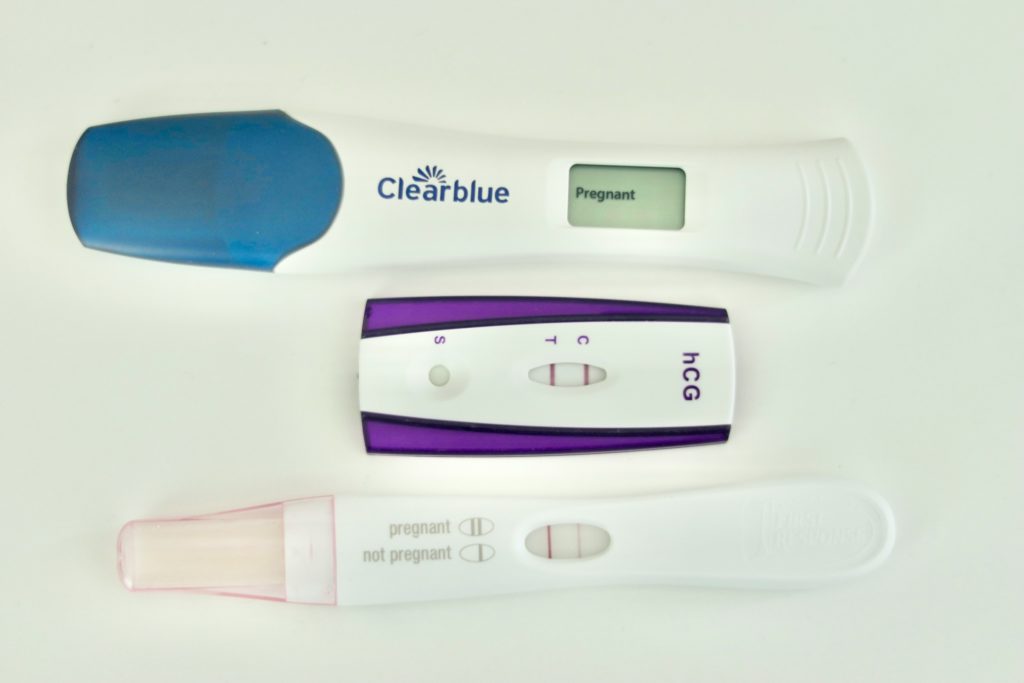Introduction
The experiences of cisgender women are frequently linked to prevailing conceptions about pregnancy and childbirth. Transgender men, as well as other non-binary individuals expressing male gender expressions, are frequently marginalised by these cisnormative assumptions regarding pregnancy status and experiences (Besse et al, 2020).
At the outset, it is useful to clarify four terms pertinent to this piece. First, the word ‘sex’ refers to “biological differences between men and women, or […] the characteristics based on which an individual is classified at birth as either male or female.” (AO OC-24/17, IACtHR, § 32 (a)). It does not acknowledge the existence of additional categories that fall outside the female/male binary paradigm (ibid). Second, ‘gender’ refers to “socially constructed identities, attributes and roles for women and men and society’s social and cultural meaning for these biological differences” (ibid). Third, the word ‘trans’ refers to persons with various gender identities [each person’s experience of gender, which may or may not correspond with the sex assigned at birth] which may or may not be the same as the sex ascribed at birth (ibid, (f), (h)). Fourth, cisgender person is someone whose gender identity corresponds with the sex assigned at birth. (ibid, (k)). This blog seeks to elucidate on these terms in respect of two landmark judgements delivered by the European Court of Human Rights (ECtHR), namely AP, Garçon, and Nicot v. France (2017) and Jurčić v. Croatia (2021).
In a nutshell, AP, Garçon, and Nicot v. France concern the (implicit) recognition of transgender persons’ reproductive capacity. However, in Jurčić v. Croatia, the ECtHR ignored this progressive and promising precedent set in AP, Garçon, and Nicot v France. Specifically, in Jurčić v Croatia, for the first time the ECtHR held that pregnancy discrimination is based on the applicant’s ‘sex’ because “only women can get pregnant”. Consequently, this blog does not aim to cover every detail of the aforementioned cases. Rather, it focuses on the contentious rulings of the ECtHR concerning pregnancy discrimination under the protected ground of “sex”, as well as its tacit acceptance of transgender people’s ability to procreate. The goal is to present the ECtHR with an intersectional approach to the problem of pregnancy discrimination which is not limited to only cisgender women. Such an intersectional approach considers pregnancy to fall under the protected grounds of “other status” and “gender identity”, rather than “sex”, all of which are covered by Article 14 (prohibition of discrimination) of the European Convention on Human Rights (ECHR). Accordingly, the ECtHR will ensure that it expressly covers cases of discrimination against transgender persons who can conceive while still recognising their right to self-determination, of which the freedom to determine one’s gender identity is one of the most basic essentials (Van Kück v. Germany, 2003, §§ 69, 73).
Transgender persons’ ability to get pregnant vs “only women can get pregnant”
i. AP, Garçon, and Nicot v. France and Jurčić v. Croatia
AP, Garçon, and Nicot v. France involved three transgender persons of French nationality who were denied the possibility to change the entries concerning their sex and forenames on their birth certificates by the national courts. In relation to the second and third applicants, the ECtHR held that making sterilisation or other treatments against the applicants’ wishes a prerequisite for the recognition of transgender persons’ gender identity was a violation of Article 8 ECHR (right to respect for private life). The ECtHR demonstrated this (implicit) recognition of transgender persons’ reproductive capacity by a two-fold analysis. First, sterilisation directly concerns the individual’s physical integrity. Thus, imposing a condition of sterilisation or other treatments to recognise the transgender person’s gender identity, means that to fully enjoy their right to private life, they have to renounce their right to respect for their physical integrity (§131). Second, the applicant’s right to gender identity is a fundamental aspect of their private life (§123; Van Kück v. Germany, 2003, §75). Hence, the ECtHR found a violation of Article 8 ECHR on account of the obligation to establish the irreversible nature of the change in their appearance as a result of the sterilisation surgery (§135).
However, four years after this progressive judgment, the ECtHR issued a contradictory and regressive conclusion regarding pregnancy discrimination. Jurčić v. Croatia involved the applicant’s pregnancy-related health insurance coverage being denied by her employer. The ECtHR determined that the Croatian authorities had discriminated against the applicant by failing to provide evidence of fraud and by implying that pregnant women should not seek employment (§81). Noting that denying a pregnant woman employment or a benefit therefrom constitutes direct discrimination based on sex, the ECtHR found that the applicant’s treatment had not been objectively justified, resulting in a violation of Article 14 ECHR in conjunction with Article 1 (protection of property) of Protocol No. 1 (§§ 81, 84). While warning Croatian authorities about gender stereotyping in the workplace, the ECtHR itself has also employed stereotypical reasoning. It specifically stated that compensation for lost salary during sick leave due to the applicant’s pregnancy “could only be adopted in respect of women, since only women could become pregnant” (§70, also in Napotnik v. Romania [2020], §77). Finding sex discrimination due to its reasoning that only women can get pregnant, the ECtHR seems to have equated the ability to conceive exclusively with womanhood or the female sex, which is not a comprehensive conclusion. It is concerning that the ECtHR shifts from a progressive and inclusive decision of acknowledging trans men’s ability to bear children with fully functional reproductive systems, to a rather regressive and stereotypical decision of gendering pregnancy as something only inherent to cisgender women.
ii. Pregnancy discrimination
It is critical to reflect on the rationale behind these decisions specifically from the ECtHR’s assertions of (a) transgender persons’ reproductive ability to conceive (AP, Garçon, and Nicot) and (b) limiting pregnancy discrimination to cisgender women because “only they [women] can get pregnant” (Jurčić v. Croatia).
First, there is no intrinsic category of woman, at least not in the social and legal sense, therefore asserting womanhood or femininity, whether in life or law, is always an enactment. (Henningsen, 2022). Instead, the category is dynamic as women have progressively gained social opportunities and legal rights that have created prospects for new forms of female life (ibid). For example, a woman may be characterised, inter alia, as having two X chromosomes, having a uterus, or truly feeling and identifying as a woman (ibid), and cannot yet get pregnant. Second, pregnancy is not exclusive to cisgender women. Trans people can become pregnant through various medical interventions, such as self-insemination with acquainted sperm of an acquainted donor, or penile-vaginal conception (Van Dijcke, 2022). Subsequently, just like cisgender women, pregnant transgender people can also be subjected to pregnancy discrimination at any point. In such a scenario, blindly putting the latter in the female sex box, with no account of their personal experiences as transgender, at the least erases their gender identities and bodies.
With these thoughts and controversial precedents in mind, it is crucial to ask what could the ECtHR find if, instead of Ms Jurčić, it had an applicant who is a transgender man with the same claim. Based on Jurčić v. Croatia, can it still hold that only cisgender women can be discriminated against based on pregnancy, thereby concluding that no discrimination has taken place? With this context and questions in mind, a plausible solution could be that the ECtHR examines pregnancy discrimination under “other status” and “gender identity” as guaranteed under Article 14 ECHR.
Call for an intersectional approach
Subsequently, to take account of the dynamic category of women and the misconception that only women can conceive, pregnancy discrimination must be examined under the protected grounds of “other status” and “gender identity”, instead of “sex” under Article 14 ECHR. It is paramount because such an approach of “un-gendering” pregnancy acknowledges the various gender identities and bodies of pregnant (transgender) people, including the experiences of people of the female sex who cannot conceive. Furthermore, it has an added value when combating the perpetuation of (gender) stereotyping because it refutes the “assertion” that only cisgender women are expected to or could become pregnant. It will not only broaden the application of pregnancy discrimination to transgender persons, non-binary persons, etc., but it will also unravel its stereotyped and contentious approach to people’s reproductive capacities. It is important that the ECtHR interprets this including “gender identity” ground to reflect transgender persons’ pregnancy experiences. With this, the ECtHR will un-gender the understanding of pregnancy and encompass the experiences of people of the female sex who are not pregnant, are unable to become pregnant, or do not wish to become pregnant. The ECtHR is encouraged to construe its decisions taking this approach, especially in light of its well-established concept that the ECHR is a living instrument, meaning that it is interpreted in the light of present-day conditions (Christine Goodwin v. the United Kingdom [GC], 2002, §§ 74-75).
Therefore, the ECtHR should abandon its skewed understanding of pregnancy, which is limited to being experienced only by cisgender women, and instead take an intersectional approach to it, which includes the ability of transgender persons to conceive.
Conclusion
Finally, if the ECtHR has implicitly recognised that transgender people can have pregnancies, it should reconsider its jurisprudence in which it has conflated and stereotyped the ability to get pregnant as something only inherent to cisgender women. One cannot ignore that combating stereotypes and practices based on social and societal norms is hard and even tiresome. However, as long as the whole community is involved in the process, especially the judiciary which can influence and shape our understanding of such stereotypes, achieving this change is not so elusive (Timmer, 2011).


